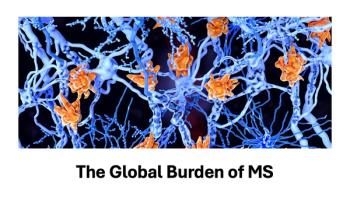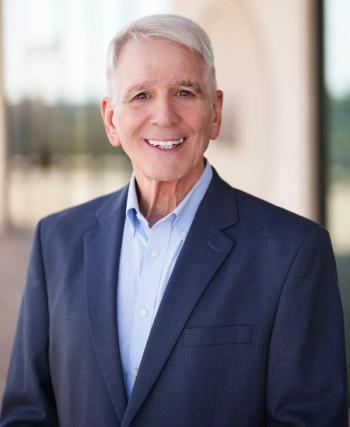
Five ways you can help fight the opioid epidemic
The opioid crisis in the U.S. is a multidimensional problem requiring a multistakeholder solution.
It is rare these days to scan the healthcare newswire on any given day and not find a story focused upon the prescription opioid abuse epidemic which is plaguing our country. So dramatic is this problem that in 2014, drug overdose overtook automobile accidents as the leading cause of accidental death in the U.S., with 47,055 lethal drug overdoses, according to the
As the nation’s opioid epidemic continues to intensify, consider joining trailblazers from health plans, pharmacies and healthcare companies at
CalabreseUnlike other conditions, prescription opioid addiction is unique for several reasons. Foremost, it does not discriminate by race, ethnicity, gender, age or socioeconomic status. The victims are our sons, daughters, brothers and sisters, moms and dads, friends and coworkers. Secondly, it is a condition with prevalence rate that is growing at an alarming pace and cure rate which remains woefully low. Lastly, and most tragically, it is considered to be a condition largely brought upon by the healthcare system itself and our failure to protect individuals from the dangers of indiscriminate prescribing and consumption of these drugs.
How did we get here?
Physicians trained in the 1960s and 1970s were taught to reserve opioids for the most severe forms of pain, such as cancer or end-of-life care. In the late 1990s however, opioid prescribing policies changed. Patient advocacy groups and pain specialists began to argue that doctors were undertreating common forms of pain that could benefit from opioids, such as backaches and joint pain. Around this same time the American Pain Society introduced the
This promotional campaign has since been considered one of the biggest mistakes in modern medicine. Between 1999 and 2014, sales of prescription opioids in the U.S. increased by over 400%. During this same time, a strong, linear relationship was established between opioid sales volume and the steady growth in U.S. morbidity and mortality rates associated with these products, according to the CDC. Whatever advantages gained in alleviating pain in subsets of the population were vastly overwhelmed by the subsequent epidemic of addiction and overdose.
New guidelines
In March of this year, the CDC published
What can MCOs and PBMs do to help?
There are multiple ways that healthcare organizations can help drive us to solutions that can truly impact the opioid epidemic. I see these broken into five primary domains.
- Upfront education and prevention
This should include strategies to increase public awareness of the issues; to better educate providers regarding safe and appropriate prescribing of these agents and how to best manage patients with possible and/or documented abuse issues; and to educate patients, particularly young adults, on the dangers of these agents and how to appropriately use, store and dispose of them when they are prescribed for legitimate purposes.
- First-fill exposure limits
The dangers of opiate use begin with the first prescription. Here, PBMs and MCOs are in a unique position to create disruptive, yet highly warranted limitations on which patients should receive which opioid drugs; in what doses; for what purpose and duration; and prescribed by which physicians and dispensed by which pharmacies. By far, if universally adopted, I see such strategies as the most effective means of impacting the prevalence trends.
- ‘High-risk’ patient identification and intervention
Here, a more forensic approach is encouraged to uncover patterns of patient-specific drug utilization that may be indicative of misuse, abuse or diversion. Such strategies should involve the integration of medical and pharmacy claims data and the application of well-designed, evidence-based algorithms to identify issues early on and allow for proper intervention with the patient and prescriber as needed.
- Vigilant prescriber and pharmacy surveillance
While most organizations employ programs today to monitor fraud, waste and abuse, many of these programs may be outdated or vastly limited in depth and scope. Here, organizations are urged to revisit, and amplify where appropriate, existing efforts to identify and shutdown the disproportionate and potentially abusive opiate prescribing by physicians, and dispensing by pharmacies, that is contributing to this nationwide crisis.
- Appropriate support and management of the afflicted
Patients with documented opiate abuse disorder require comprehensive, well-coordinated care and support to overcome their addiction. Here, organizations must ensure appropriate access to the right resources for these individuals including properly accredited treatment centers; behavioral health services; medication-assisted treatment programs; post-discharge monitoring, coaching and counseling services; and prescriber and pharmacy ‘lock-in’ strategies where appropriate.
Shared accountability needed
It is well-evident that the opioid crisis in the U.S. is a multidimensional problem requiring a multi-stakeholder solution. As members of the healthcare community, we all to a certain degree share accountability for this crisis, and as such we each have the same (if not greater) responsibility in delivering a solution. The time is now for us to step up with the courage to develop and deploy market-disruptive strategies that will drive positive change and ultimately save lives.
David Calabrese is chief pharmacy officer, at OptumRx, and a Managed Healthcare Executive editorial advisor.
Newsletter
Get the latest industry news, event updates, and more from Managed healthcare Executive.






















































